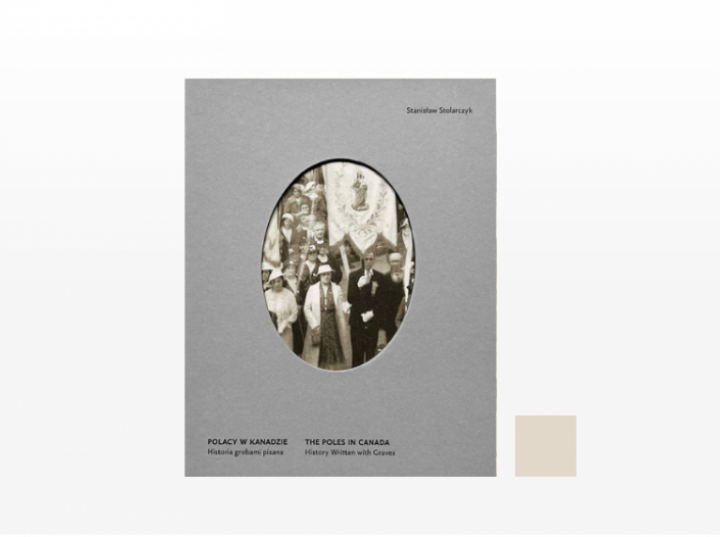The history of Gdańsk merchants at the turn of the 17th and 18th centuries, sailors and adventurers, insurgents was presented in the book titled “Poles in Canada. History Written with Graves” by Stanisław Stolarczyk. Meeting with the author on Tuesday, June 20.
The history of the Poles in Canada and their settlement was presented in the form of a colorful history on the one hand and, on the other hand, based on careful documentation prepared by the author of the book, Stanisław Stolarczyk, in during his three-year journey. across Canada and the places where Poles have lived and still live in the provinces of Ontario, Manitoba, Saskatchewan and Alberta.
The author – as he himself mentions – drove 39,000 km. kilometers, used 347 rolls of film, or 8,328 photos of people, places and events.
“It is the story of merchants from Gdańsk at the turn of the 17th and 18th centuries, sailors and adventurers, insurgents fleeing the repressions of the partition powers, Kashubians brought to settle in the virgin forest in the 19th and beginning of the 20th century, as well as about the Hallerczyks – volunteer soldiers of the First World War – characterizes Dorota Janiszewska-Jakubiak, director of the Polonika Institute, which is the publisher of the book.
“Often the only material traces of these people’s lives are the churches they built, crosses in rural cemeteries, tombstones and mausoleums. The book presented is the first study of the history of the Poles in Canada, carried out from the perspective of the heritage preserved in cemeteries. It should be emphasized that the unique and personal attitude of the author towards the places he visited and described, as well as the smallest and most touching traces left by the first Poles, resulted in the creation of a publication vividly describing the Polish heritage in Canada. It is not only a story of tombs or churches, but also a story about the fate of thousands of Polish emigrants across the ocean,” emphasizes director Janiszewska-Jakubiak.
Stanisław Stolarczyk has documented a total of several dozen Polish rural necropolises in Canada.
“I realized that the history of each colony rests in the cemetery, writes Stolarczyk. I started to read it on the destroyed tombstones, on the rotten crosses. discovered that thousands of the graves of our exiles are completely forgotten, often anonymous, and impossible to save. They are destroyed by time and lack of human memory. And the only solution for them is to prepare detailed photographic and descriptive documentation. Later, there were more trips, as I called it + in Canada +”.
The documentation of Polish cemeteries and rural churches in the provinces of Canada was started by Stanisław Stolarczyk in 1987. At that time he was a scholarship holder of the Royal Canadian Geographical Society in Ottawa, for which he prepared the documentation “Geographical Names Polish in Canada”.
At that time, in the archives of Warsaw and on maps, he managed to find, among others, settlements such as: Dobrowody, Kowalowka, Krakow, Zbaraz, Tarnopol. “The journalist’s curiosity became the starting point of a unique adventure” – notes the author.
In 2020, Stanisław Stolarczyk finished documenting Polish churches and rural cemeteries in Canada. Then, putting an end to this subject, he visited the former colony of Copernicus in Alberta, now called… Poland.
“It was a rather symbolic farewell – he recalls – because now I document the individual graves, the resting places of Polish officers, scientists, people of culture and art… exceptional Poles who, although he dreamed all their lives of returning to free Poland, died en route to their native country and were buried on friendly Canadian soil.
Documenting the resting places of Polish immigrants in Canada was noticed by prof. dr hab. Jacek Kolbuszewski, who wrote in his book “Cmentarze”: “Not much can be said about the oldest cemeteries of Polish emigrant peasants abroad, because no one took care of them except Stanisław Stolarczyk. However , on the basis of his observations and his own documents, it can be said with certainty that where they settled in larger groups, they established their cemeteries on the model of national cemeteries, introduced models of crosses and graves recalled from the land, and their understanding of death was the same as that which they had brought out of the land.
Meeting around the publication published in Polish and English by Stanisław Stolarczyk “Poles in Canada. History Written with Graves” will take place on June 20 at 6 p.m. at Księgarnia Korekta, Al. Wyzwolenia 14 in Warsaw (PAP)
Author: Anna Bernat
abe/dki/

“Web specialist. Social media ninja. Amateur food aficionado. Alcohol advocate. General creator. Beer guru.”



![Canada. When are the Paris 2024 Olympic qualifiers? What time do the volleyball players play? [TRANSMISJA NA ¯YWO]](https://bi.im-g.pl/im/a6/d9/1c/z30250150IER,Polska---Bulgaria--kwalifikacje-olimpijskie-siatka.jpg)

